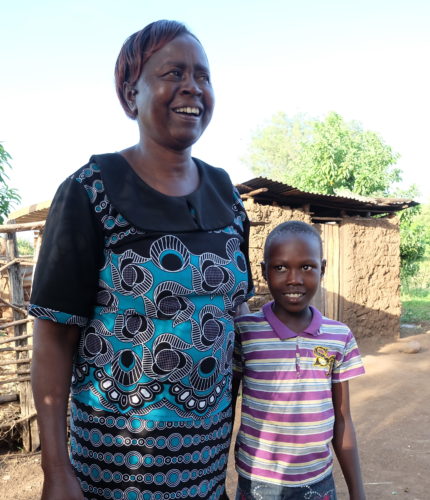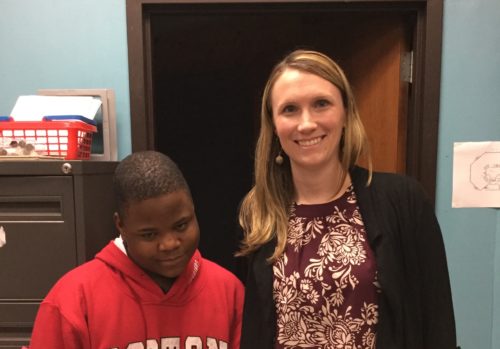When Danielle* was a sponsored child with Children Incorporated, she dreamed of going to college — but her family couldn’t afford it. So before she graduated from high school, with the help of our volunteer coordinator at her school in Kentucky, Danielle applied for assistance from our Higher Education Fund.
Thankfully, because of our wonderful donors and supporters, we had the funds available to grant Danielle’s request for support; and she went on to pursue a degree in education at Morehead State University. At that time, Danielle said, “The Children Incorporated sponsorship program has really changed my life and my perception of giving. I want to share that with absolutely everyone that I can. Thank you all so much for everything that you do. I am grateful that the Children Incorporated program is giving me the opportunity to reach my dreams.”
“I am so grateful that someone saw the ability in me to spend day in and day out with ‘those kids’ – because I love them as my own.”
– Danielle
Helping troubled youth
After graduating from college in 2011, Danielle accepted a position teaching middle school students in Western Kentucky. Then, in 2016, ready for a new challenge, Danielle accepted a position teaching troubled youth in Tennessee. She wrote to our Director of U.S. Programs, Renée Kube, about her experience working with these special kids after her first year on the job.
Danielle stated, “Around this time a year ago, I interviewed for a position as a teacher at an alternative school in Knoxville. I never imagined what a wonderful fit the position would be for me — perhaps not until today, as my first school year comes to an end. Educators often look at the troubled children in school and want someone else to ‘deal with them.’ Until working with these kids daily, I had also felt that way.”
A caring educator
Danielle continued, “But now, only two days into summer break, my mind is racing with questions: Are the kids hungry? Are they staying off the streets? Are they emotionally okay today? Has someone told them good morning and made them realize their value today? My strongest and weakest personality trait as an educator is that I care so very deeply. I tell my kids I love them daily, even when they seem unlovable. Creating a classroom that allows students to open up and share their stories is part of who I am as an educator — and do they ever share their stories!

Danielle is an advocate for her students.
“If I am not going to be there one day, I see the importance of letting them know that I will be absent, because for some of them, their teachers are their only stability. This time last year, I had no idea that I would be the teacher I am now. I am the one who cries for weeks after a student is arrested, because they possess so much value. I am the one who believes in the kids that no one ever believes in; the one who will stop class to help a student who is all out of sorts; and the one who makes it a priority to know every bit of a child’s life, and to help them work through difficulties. My students and co-workers have been my source of learning and growing this year. I am so grateful that someone saw the ability in me to spend day in and day out with ‘those kids’ — because I love them as my own.”
It is obvious that Danielle is a caring and outstanding educator, and that she is an advocate for her students. A lot of the questions that she asks about her troubled students are the exact same questions that our volunteer coordinators ask about the children enrolled in our sponsorship program. Here at Children Incorporated, we are so proud of Danielle. She is an amazing, self-supporting person who beautifully showcases the importance of both our sponsorship program and our Higher Education Fund.
*Name changed for individual’s protection.
***
HOW DO I SPONSOR A CHILD IN KENTUCKY?
You can sponsor a child in Kentucky in one of two ways: call our office at 1-800-538-5381 and speak with one of our staff members, or email us at sponsorship@children-inc.org.




